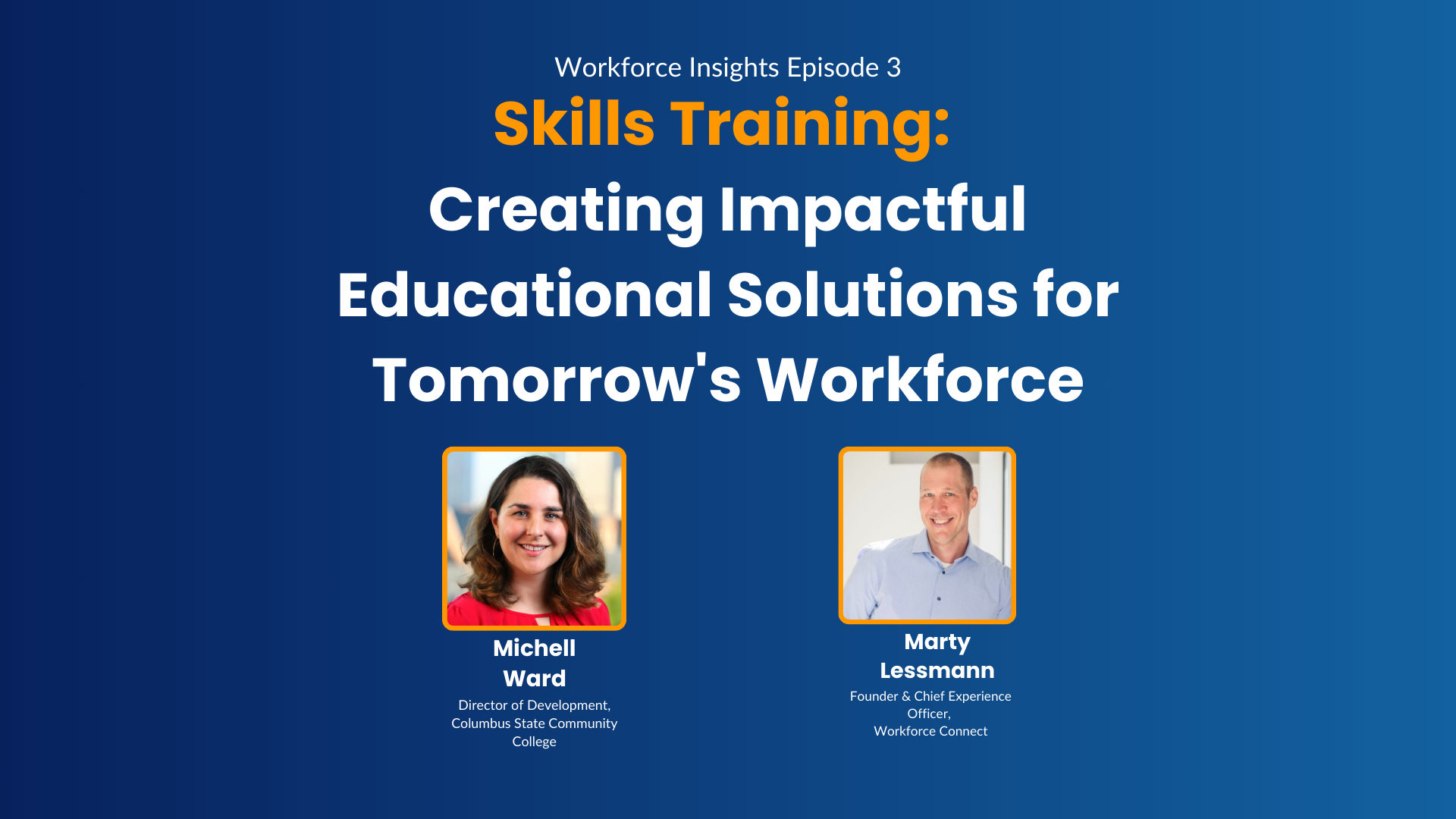Executive Summary
Sector partnerships are collaborations between community colleges, technical institutions, workforce development organizations, and industry leaders that focus on meeting the specific needs of a particular sector, such as manufacturing, healthcare, or information technology. These partnerships bring together employers from the same industry to align training programs with workforce demand, ensuring students acquire the skills necessary to succeed in their chosen field. According to the National Skills Coalition (2023), sector partnerships can increase job placement rates by 30% when aligned closely with local industry needs. This Workforce Insight explores the concept of sector partnerships, offers best practices for managing these collaborations effectively, and highlights successful examples that illustrate the potential of sector-based workforce programs. By understanding how to implement and maintain sector partnerships, community and technical colleges and workforce organizations can better support their local economies and provide students and job seekers with relevant, high-demand career paths.
Introduction
In today’s rapidly changing economy, community and technical colleges and workforce organizations play a vital role in preparing a skilled workforce that meets local industry needs. However, creating effective training programs requires more than simply offering courses; it requires a deep understanding of industry trends and collaboration with employers. Sector partnerships have emerged as a powerful strategy to achieve this, enabling educational institutions to design training programs in close alignment with the needs of specific industries. These partnerships focus on bringing together businesses from the same sector—such as healthcare, advanced manufacturing, or renewable energy—to collectively address workforce challenges. A report by the American Association of Community Colleges (AACC, 2023) found that 68% of community colleges are engaged in some form of sector partnership, emphasizing their growing importance in workforce development.
This Workforce Insight reviews:
- Overview of Sector Partnerships
- Best Practices for Managing Partnerships
- Examples of Successful Sector-based Programs
- Funding Sector Partnerships
“As an organization,we are leaning into structure, and Workforce Connect provides the structure.”

Dr. Stephanie Fuji
President Arapahoe Community College
An Introduction to Sector Partnerships
Sector partnerships address the workforce needs of specific industries by fostering collaboration among employers, educational institutions, and other key stakeholders. These partnerships are structured to align training programs directly with industry demands, closing skills gaps and creating clear pathways to employment. Core elements of sector partnerships include:
- Industry-Driven Collaboration: Employers lead efforts to shape program content, ensuring relevance.
- Alignment with Education: Educational programs are designed to meet specific industry standards.
- Workforce Development Focus: Training initiatives emphasize skill-building for immediate employability and career growth.
- Mutual Benefits for Employers and Students: Employers gain a skilled workforce, while students receive training aligned with real job opportunities.
Best Practices for Managing Sector Partnerships
To ensure sector partnerships achieve their goals of industry-aligned workforce development, it’s essential to follow management practices that foster clear communication, adaptability, and strong collaboration. The best practices outlined below help partnerships maintain relevance, respond to evolving industry needs, and deliver meaningful workforce outcomes.
- Define Clear Roles and Responsibilities
Outline each partner’s role, including employers, educational institutions, and workforce boards, to ensure everyone understands their specific contributions to the partnership. Use Memorandums of Understanding (MOUs) to formalize these roles and responsibilities, creating a shared commitment to the program’s success. - Establish Regular Communication and Meetings
Schedule consistent meetings with all stakeholders to review program progress, address challenges, and adjust training content as needed. The U.S. Department of Labor (2023) recommends holding quarterly meetings to ensure alignment with industry changes. Implement a structured communication plan to provide updates on student outcomes, emerging industry trends, and upcoming program modifications. - Use Data-Driven Decision Making
Rely on labor market data to guide program design, targeting high-demand skills. Monitor key outcomes, such as job placement rates and employer satisfaction, to continually evaluate and refine the program’s effectiveness based on real-world performance metrics. - Engage Employers as Co-Instructors
Invite industry professionals to teach specific technical skills or practices. This hands-on involvement not only enhances training but also ensures that the curriculum reflects current industry standards. Employers serving as instructors or mentors bring valuable insights that bridge classroom learning and workplace expectations. - Secure Diverse Funding Sources
Support sector partnerships through a blend of federal, state, and private funding sources. Federal grants, like those from the Workforce Innovation and Opportunity Act (WIOA), provide foundational support, while partnerships with local businesses offer in-kind contributions, such as training facilities or equipment. This diversified funding approach boosts sustainability and broadens the partnership’s resources.
Examples of Successful Sector-Based Workforce Programs
Effective sector partnerships address industry-specific workforce needs through targeted training and collaboration. The following examples highlight successful partnerships across various industries, demonstrating how well-coordinated efforts between educational institutions, workforce boards, and employers can drive positive outcomes in job placement, skills development, and career readiness.
Ohio TechNet, a consortium of community colleges, workforce boards, and manufacturers, has trained over 5,000 workers in advanced manufacturing through short-term certificates and customized programs. The program’s adaptability to real-time labor market data has been key to its success in meeting industry demands (Ohio TechNet, 2023).
The Colorado Workforce Development Council partnered with community colleges and healthcare providers to address the state’s shortage of nurses and medical assistants. Through accelerated training programs and hands-on experience in hospitals, this partnership has increased job placement rates for graduates by 40% (Lumina Foundation, 2022).
In collaboration with Seattle Colleges and local maritime employers, the Seattle Maritime Sector Partnership prepares workers for careers in shipbuilding, marine engineering, and logistics. By integrating employer input and offering apprenticeships, the program has successfully reduced turnover among entry-level maritime workers by 25% (U.S. Chamber of Commerce, 2023).
These sector-based programs demonstrate the impact of targeted, collaborative training approaches in meeting specific industry workforce needs.
Conclusion
Sector partnerships represent a powerful strategy for aligning workforce training with industry needs, providing community and technical colleges and workforce organizations with the tools to create relevant, job-focused programs. By adopting best practices such as regular communication, data-driven decision-making, and active employer engagement, institutions can ensure that these partnerships remain effective and responsive to changing market demands. The examples of Ohio TechNet, Colorado Workforce Development Council, Seattle Maritime Sector Partnership, and Massachusetts Life Sciences Center demonstrate how well-managed collaborations can significantly impact regional economies. As the demand for skilled workers continues to grow, fostering strong sector partnerships will be essential for building a workforce that meets the needs of today’s industries while preparing for tomorrow’s challenges.
References
- American Association of Community Colleges. (2023). *The Role of Sector Partnerships in Workforce Development*. AACC Research Brief.
- Lumina Foundation. (2022). *Building Effective Healthcare Sector Partnerships*. Lumina Foundation Report.
- Massachusetts Life Sciences Center. (2023). *Life Sciences Workforce Initiative: A Case Study*. Massachusetts Life Sciences Center Annual Report.
- National Skills Coalition. (2023). *Data-Driven Strategies for Sector Partnerships*. National Skills Coalition Study.
- Ohio TechNet. (2023). *Training the Future Workforce: Advanced Manufacturing*. Ohio TechNet Consortium Report.
- U.S. Chamber of Commerce. (2023). *Partnerships in the Maritime Industry: Lessons from Seattle*. Chamber of Commerce Report.
- U.S. Department of Labor. (2023). *Best Practices for Managing Sector-Based Training Programs*. Department of Labor Guidelines.




